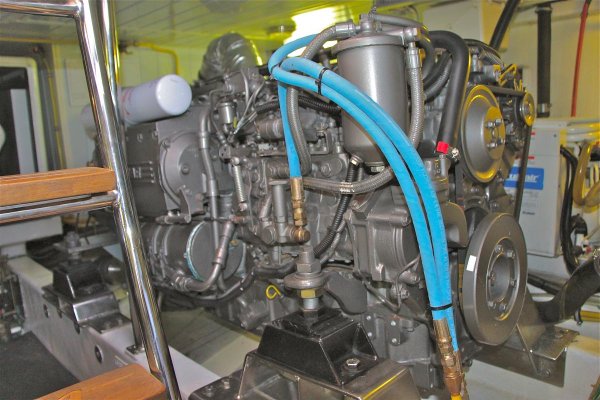- Joined
- Oct 1, 2007
- Messages
- 7,331
- Location
- Texas
- Vessel Name
- Floatsome & Jetsome
- Vessel Make
- Meridian 411
Since the advent of ethanol in our gasoline, there have been horror stories about how they affect our dinghy engines. I have had the pleausre of experiencing some of those stories. Two times in 3 years I have had to rebuild the carburetor on my newish Yamaha 2 stroke.
Well this last time I took it to the dealer and he mentioned something to me that nobody had ever told me. It is common practice for us to run the gas out of our carbs when we are done using it. He said that while this was the way to do things before the ethanol debacle, it is not advised anymore. When you run the fuel out until the engine quits, there is still a little fuel left on the bottom of the bowl along with the water that the ethanol likes to attach itself to. Well the fuel will evntually evaporate and leave nothing but the corrosive water. Then you end up with the needle in the bowl getting fouled up with crap and sticking!!! I do not run my carburetor "dry" anymore and so far, this season, I have had no issues with the dinghy engine. I have had sit times for the dinghy of over 2 months...no issues with untreated gas.
There are times when I am around friends/people while they brag about not having any ethanol issues with their dinghy engines....I ask them if they pull the fuel line to burn the gas out of their motor....the answer is a resounding...NO!!! Not a scientific survey but it has backed up this line of thinking.
So for those that have ethanol issues with their dinghy engines, do you pull the fuel line and burn the gas out of your carb? And are there people out there that do not and what is your experience ref ethanol issues???
Well this last time I took it to the dealer and he mentioned something to me that nobody had ever told me. It is common practice for us to run the gas out of our carbs when we are done using it. He said that while this was the way to do things before the ethanol debacle, it is not advised anymore. When you run the fuel out until the engine quits, there is still a little fuel left on the bottom of the bowl along with the water that the ethanol likes to attach itself to. Well the fuel will evntually evaporate and leave nothing but the corrosive water. Then you end up with the needle in the bowl getting fouled up with crap and sticking!!! I do not run my carburetor "dry" anymore and so far, this season, I have had no issues with the dinghy engine. I have had sit times for the dinghy of over 2 months...no issues with untreated gas.
There are times when I am around friends/people while they brag about not having any ethanol issues with their dinghy engines....I ask them if they pull the fuel line to burn the gas out of their motor....the answer is a resounding...NO!!! Not a scientific survey but it has backed up this line of thinking.
So for those that have ethanol issues with their dinghy engines, do you pull the fuel line and burn the gas out of your carb? And are there people out there that do not and what is your experience ref ethanol issues???



 The gas partially evaporated in the bowl and left a varnish type residue there and in the jets. Our 15 hp Yamaha 2 stroke we used daily for 6-10 months per year for 6 years. That carburetor has never been taken apart. We do try to get ethanol free gas.
The gas partially evaporated in the bowl and left a varnish type residue there and in the jets. Our 15 hp Yamaha 2 stroke we used daily for 6-10 months per year for 6 years. That carburetor has never been taken apart. We do try to get ethanol free gas.